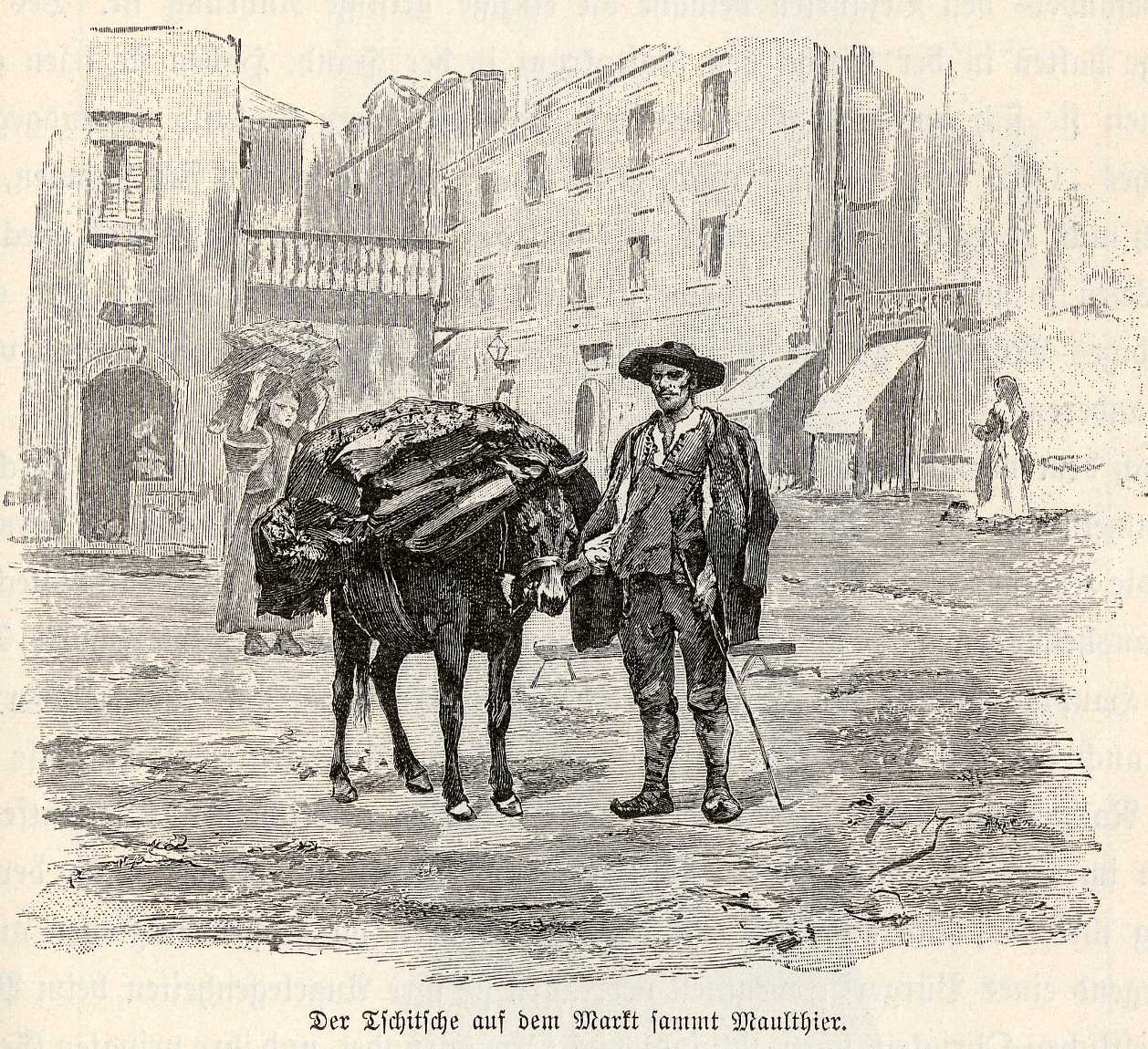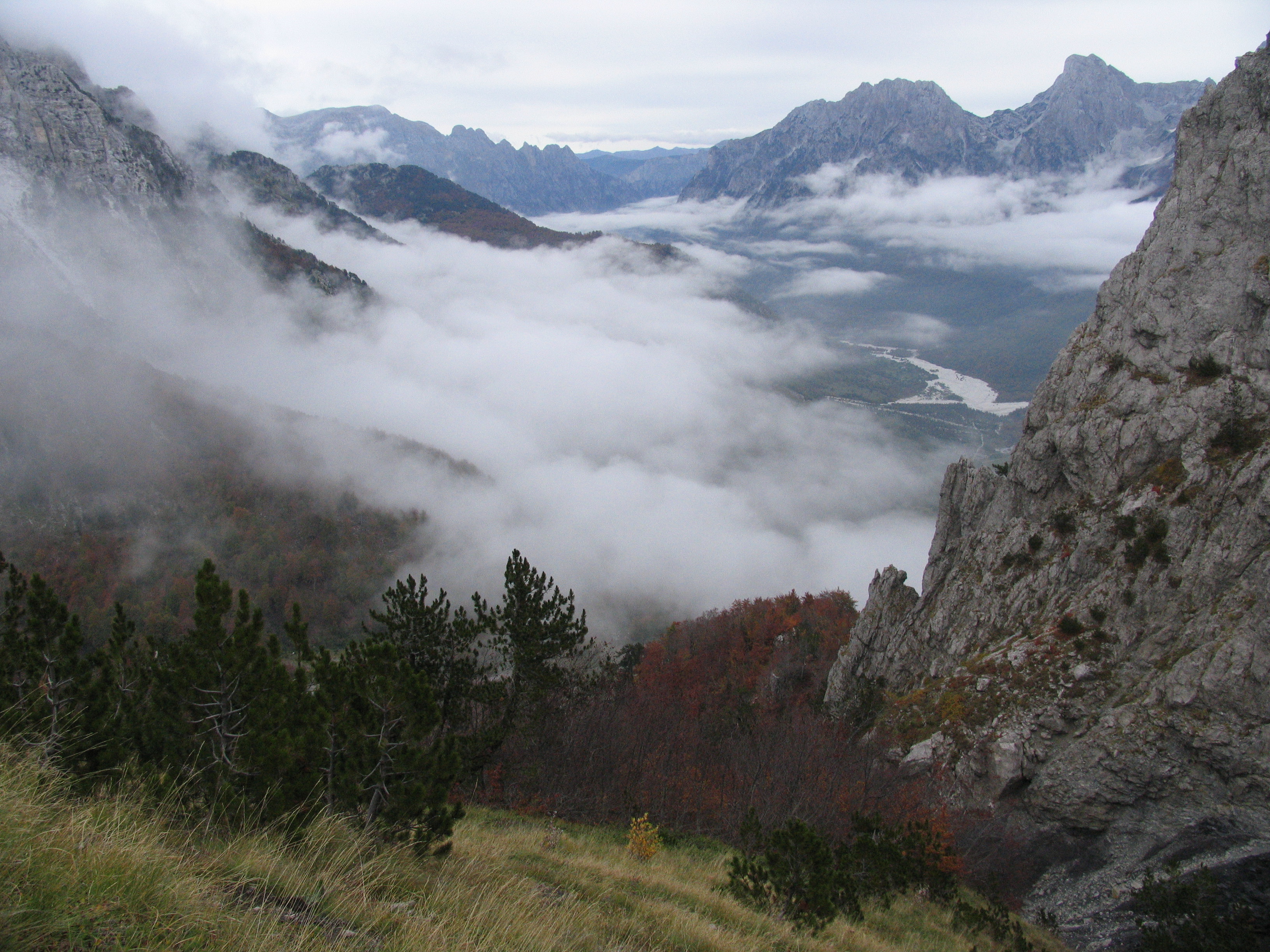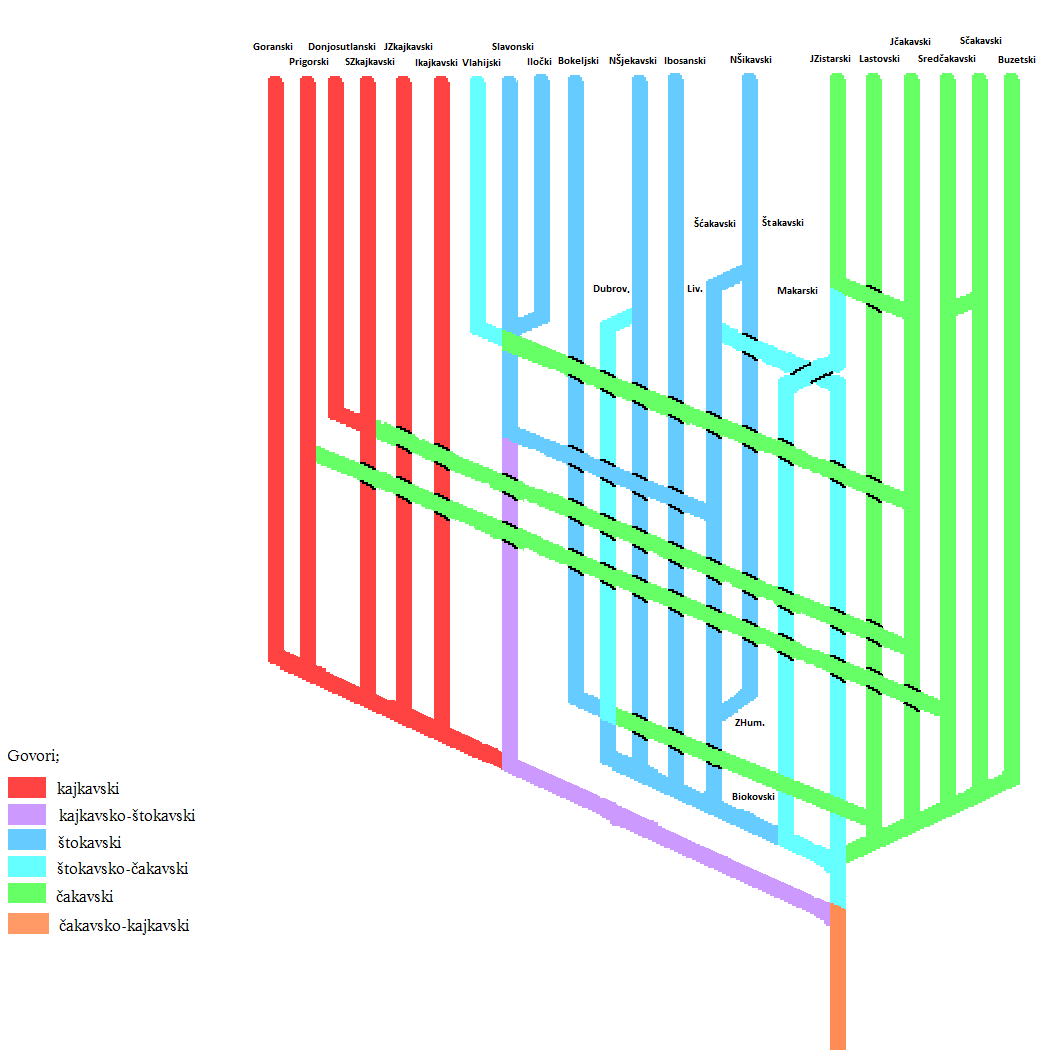|
Ćićarija
Ćićarija (; ; ; ) is a mountainous plateau in the northern and northeastern part of the Istria peninsula, long and wide. It mostly lies in Croatia, while its northern part lies in southwestern Slovenia (the traditional region of Inner Carniola). The highest peak is Veliki Planik at . At (2001), Ćićarija is sparsely populated, due to its karst landscape, poor economic development and rough climate. Name The name ''Ćićarija'' is derived from the South Slavic term ''Ćići, Ćić'', which refers to Istrians living in the area around the Učka, Učka Mountains, originally referring to the Vlachs and Istro-Romanians of the area. The ethnonym is believed to derive from the Istro-Romanian language, Istro-Romanian word ''ce'' 'what', which is a semantic basis for other regional ethnonyms (cf. ''Kajkavian dialect, Kajkavian'', ''Chakavian dialect, Chakavian'', etc.). Sources * * * References Bibliography * External links * {{DEFAULTSORT:Cicarija Landforms of Istri ... [...More Info...] [...Related Items...] OR: [Wikipedia] [Google] [Baidu] |
Ćići
Ćić (plural Ćići, , , ) is an ethnonym and Exonym and endonym, exonym in a broader sense for all the people who live in the mountainous Ćićarija area in Croatia and Slovenia. Alongside the term ''Ćiribirci'', in the narrow sense, it is an exonym referring to a community of the Istro-Romanians in the village Žejane in a small part of eastern Ćićarija and the villages around the former Lake Čepić west of the Učka range in Istria, Croatia. Etymology The first, unspecified thesis of possible Romance origin was given by Franz Miklosich in 1860 when he designated all ''Čiči'' as "overall Slavicized Romanians". Linguist and phonologist Josip Ribarić (1880–1954), a native of Vodice in Ćićarija, disproved this thesis with historical documents, anthroponyms and language dialects in the Karst Plateau, karst. According to him, the term ''Ćići'' initially referred to the Romance language, Romance-speaking Balkan population, the same as ''Morlachs'' (i.e. ''Vlachs of Croati ... [...More Info...] [...Related Items...] OR: [Wikipedia] [Google] [Baidu] |
Istro-Romanians
The Istro-Romanians ( or ) are a Romance languages, Romance ethnic group native to or associated with the Istria, Istrian Peninsula. Historically, they inhabited vast parts of it, as well as the western side of the island of Krk until 1875. However, due to several factors such as the industrialization and modernization of Istria during the socialist regime of Socialist Federal Republic of Yugoslavia, Yugoslavia, many Istro-Romanians emigrated to other places, be they Croatian cities such as Pula and Rijeka or places such as New York City, Trieste and Western Australia. The Istro-Romanians dwindled severely in number, being reduced to eight Human settlement, settlements on the Croatian side of Istria in which they do not represent the Ethnic majority, majority. It is known that the Istro-Romanians are actually not indigenous to Istria, since the differences between the Istro-Romanian language and the now Language death, extinct geographically close Dalmatian language, Dalmatian ar ... [...More Info...] [...Related Items...] OR: [Wikipedia] [Google] [Baidu] |
Istro-Romanian Language
The Istro-Romanian language () is an Eastern Romance languages, Eastern Romance language, spoken in a few villages and hamlets in the peninsula of Istria in Croatia, as well as in the diaspora of this people. It is sometimes abbreviated to IR. While its speakers call themselves ''Rumeri'', ''Rumeni'', they are also known as ''Vlachs'', ''Rumunski'', ''Ćići'' and ''Ćiribiri''. The last one, used by ethnic Croats, originated as a disparaging nickname for the language, rather than its speakers. Due to the fact that its speakers are estimated to be fewer than 500, it is listed among languages that are "severely endangered" in the UNESCO ''Atlas of the World's Languages in Danger''. It is also considered by some Romanian scholars to be an idiosyncratic offshoot dialect of Romanian language, Romanian. Recent history The Istro-Romanians have faced many significant challenges in preserving their language, culture and ethnic identity, including emigration from communism and migrat ... [...More Info...] [...Related Items...] OR: [Wikipedia] [Google] [Baidu] |
Dinaric Alps
The Dinaric Alps (), also Dinarides, are a mountain range in Southern Europe, Southern and Southcentral Europe, separating the continental Balkan Peninsula from the Adriatic Sea. They stretch from Italy in the northwest through Slovenia, Croatia, Bosnia and Herzegovina, Serbia, Montenegro, and Kosovo to Albania in the southeast. The Dinaric Alps extend for approximately along the western Balkan Peninsula from the Julian Alps of the northeast Italy, downwards to the Šar Mountains, Šar and Korab (mountain), Korab massif, where their direction changes. The Accursed Mountains are the highest section of the entire Dinaric Alps; this section stretches from Albania to Kosovo and eastern Montenegro. Maja Jezercë, standing at Metres above the Adriatic, above the Adriatic, is the highest peak and is located in Albania. The Dinaric Alps are one of the most rugged and extensive mountainous areas of Europe, alongside the Caucasus Mountains, Alps, Pyrenees, Carpathian Mountains and Scand ... [...More Info...] [...Related Items...] OR: [Wikipedia] [Google] [Baidu] |
UÄŤka
The Učka (, ) is a mountain range in western Croatia. It rises behind the Opatija riviera, on the eastern side of the Istrian peninsula. It forms a single morphological unit together with the Ćićarija range which stretches from the Bay of Trieste to Rijeka. Učka is a limestone massif with numerous areas of karst, stretching for 20 km from the Poklon Pass (920 m) to Plomin Bay, and is between 4 and 9 km wide.Naklada Naprijed, ''The Croatian Adriatic Tourist Guide'', pg. 89, Zagreb (1999), It differs from all the other coastal mountains in Croatia because of its abundant vegetation on the seaward side. Best known are the forests of sweet chestnuts in the area around Lovran. Učka's highest peaks are considered nature reserves and memorial areas. The highest peak, Vojak, is located at 1,396 meters above sea level. It offers views over Istria, the Bay of Kvarner, the Julian Alps and the Adriatic islands, right down to Dugi Otok. The subject of a degree of lo ... [...More Info...] [...Related Items...] OR: [Wikipedia] [Google] [Baidu] |
Istria
Istria ( ; Croatian language, Croatian and Slovene language, Slovene: ; Italian language, Italian and Venetian language, Venetian: ; ; Istro-Romanian language, Istro-Romanian: ; ; ) is the largest peninsula within the Adriatic Sea. Located at the top of the Adriatic between the Gulf of Trieste and the Kvarner Gulf, the peninsula is shared by three countries: Croatia, Slovenia, and Italy,Marcel Cornis-Pope, John Neubauer''History of the literary cultures of East-Central Europe: junctures and disjunctures in the 19th And 20th Centuries'' John Benjamins Publishing Co. (2006), Alan John Day, Roger East, Richard Thomas''A political and economic dictionary of Eastern Europe'' Routledge, 1sr ed. (2002), 90% of its area being part of Croatia. Most of Croatian Istria is part of Istria County. Geography The geographical features of Istria include the Učka/Monte Maggiore mountain range, which is the highest portion of the Ćićarija/Cicceria mountain range; the rivers Dragonja/Dragogna, ... [...More Info...] [...Related Items...] OR: [Wikipedia] [Google] [Baidu] |
Plateaus Of Croatia
In geology and physical geography, a plateau (; ; : plateaus or plateaux), also called a high plain or a tableland, is an area of a highland consisting of flat terrain that is raised sharply above the surrounding area on at least one side. Often one or more sides have deep hills or escarpments. Plateaus can be formed by a number of processes, including upwelling of volcanic magma, extrusion of lava, and erosion by water and glaciers. Plateaus are classified according to their surrounding environment as intermontane, piedmont, or continental. A few plateaus may have a small flat top while others have wider ones. Formation Plateaus can be formed by a number of processes, including upwelling of volcanic magma, extrusion of lava, plate tectonics movements, and erosion by water and glaciers. Volcanic Volcanic plateaus are produced by volcanic activity. They may be formed by upwelling of volcanic magma or extrusion of lava. The underlining mechanism in forming plateaus from up ... [...More Info...] [...Related Items...] OR: [Wikipedia] [Google] [Baidu] |
Landforms Of Istria County
A landform is a land feature on the solid surface of the Earth or other planetary body. They may be natural or may be anthropogenic (caused or influenced by human activity). Landforms together make up a given terrain, and their arrangement in the landscape is known as topography. Landforms include hills, mountains, canyons, and valleys, as well as shoreline features such as bays, peninsulas, and seas, including submerged features such as mid-ocean ridges, volcanoes, and the great oceanic basins. Physical characteristics Landforms are categorized by characteristic physical attributes such as elevation, slope, orientation, structure stratification, rock exposure, and soil type. Gross physical features or landforms include intuitive elements such as berms, cliffs, hills, mounds, peninsulas, ridges, rivers, valleys, volcanoes, and numerous other structural and size-scaled (e.g. ponds vs. lakes, hills vs. mountains) elements including various kinds of inland and oceanic waterbodi ... [...More Info...] [...Related Items...] OR: [Wikipedia] [Google] [Baidu] |
Chakavian Dialect
Chakavian or Čakavian (, , , proper name: or own name: ''čokovski, čakavski, čekavski'') is a South Slavic supradialect or language spoken by Croats along the Adriatic coast, in the historical regions of Dalmatia, Istria, Croatian Littoral and parts of coastal and southern Central Croatia (now collectively referred to as Adriatic Croatia or Littoral Croatia), as well as by the Burgenland Croats as Burgenland Croatian in southeastern Austria, northwestern Hungary and southwestern Slovakia as well as few municipalities in southern Slovenia on the border with Croatia. Chakavian represents the basis for early literary standards in Croatia, and until the modern age was simply known and understood, along with the Kajkavian and Shtokavian idioms in Croatia, as the Croatian language (''hrvatski jezik''). Legal and liturgical to literary texts until the 16th century, including literary work by "the father of Croatian literature" Marko Marulić and the first Croatian dict ... [...More Info...] [...Related Items...] OR: [Wikipedia] [Google] [Baidu] |
Kajkavian Dialect
Kajkavian is a South Slavic supradialect or language spoken primarily by Croats in much of Central Croatia and Gorski Kotar. It is part of the South Slavic dialect continuum, being transitional to the supradialects of ÄŚakavian, Ĺ tokavian and the Slovene language. There are differing opinions over whether Kajkavian is best considered a dialect of the Serbo-Croatian language or a fully-fledged language of its own, as it is only partially mutually intelligible with either ÄŚakavian or Ĺ tokavian and bears more similarities to Slovene; it is transitional to and fully mutually intelligible with Prekmurje Slovene and the dialects in Slovenian Lower Styria's region of Prlekija in terms of phonology and vocabulary. Outside Croatia's northernmost regions, Kajkavian is also spoken in Austrian Burgenland and a number of enclaves in Hungary along the Austrian and Croatian border and in Romania. Name The term "Kajkavian" and the broader classification of what defines this dialect ... [...More Info...] [...Related Items...] OR: [Wikipedia] [Google] [Baidu] |
Gračišće
Gračišće (Italian: Gallignana) is a village and municipality of Istria County in Croatia. Geography The municipality is located in the interior of the Istrian peninsula. The Gračišće village which is also the administrative centre of Gračišće municipality is located about east of the county seat Pazin, on the road to Kršan and Vozilići. It is seated on the top of the hill at an elevation of and has the overall appearance of a typical medieval Istrian town. The village stands completely under monumental protection. The old cemetery which is located in front of St. Vitus Church offers a panoramic view of inner Istria up to the Učka mountain range () in the east, as well as to the Julian Alps and the Dolomites in the north. Between Gračišće and Pićan lies a protected landscape (1475 ha, protected since 1973) with unusual geological characteristics. Diverse landscape has been formed by erosion of marl, sandstone and limestone deposits with brook valleys formed in m ... [...More Info...] [...Related Items...] OR: [Wikipedia] [Google] [Baidu] |
Ethnonym
An ethnonym () is a name applied to a given ethnic group. Ethnonyms can be divided into two categories: exonyms (whose name of the ethnic group has been created by another group of people) and autonyms, or endonyms (whose name is created and used by the ethnic group itself). For example, the dominant ethnic group of Germany is the Germans. The ethnonym ''Germans'' is a Latin-derived exonym used in the English language, but the Germans call themselves , an endonym. The German people are identified by a variety of exonyms across Europe, such as (French language, French), (Italian language, Italian), (Swedish language, Swedish) and (Polish language, Polish). As a sub-field of anthroponymy, the study of ethnonyms is called ethnonymy or ethnonymics. Ethnonyms should not be confused with demonyms, which designate all the people of a geographic territory, regardless of ethnic or linguistic divisions within its population. Variations Numerous ethnonyms can apply to the same ethni ... [...More Info...] [...Related Items...] OR: [Wikipedia] [Google] [Baidu] |





